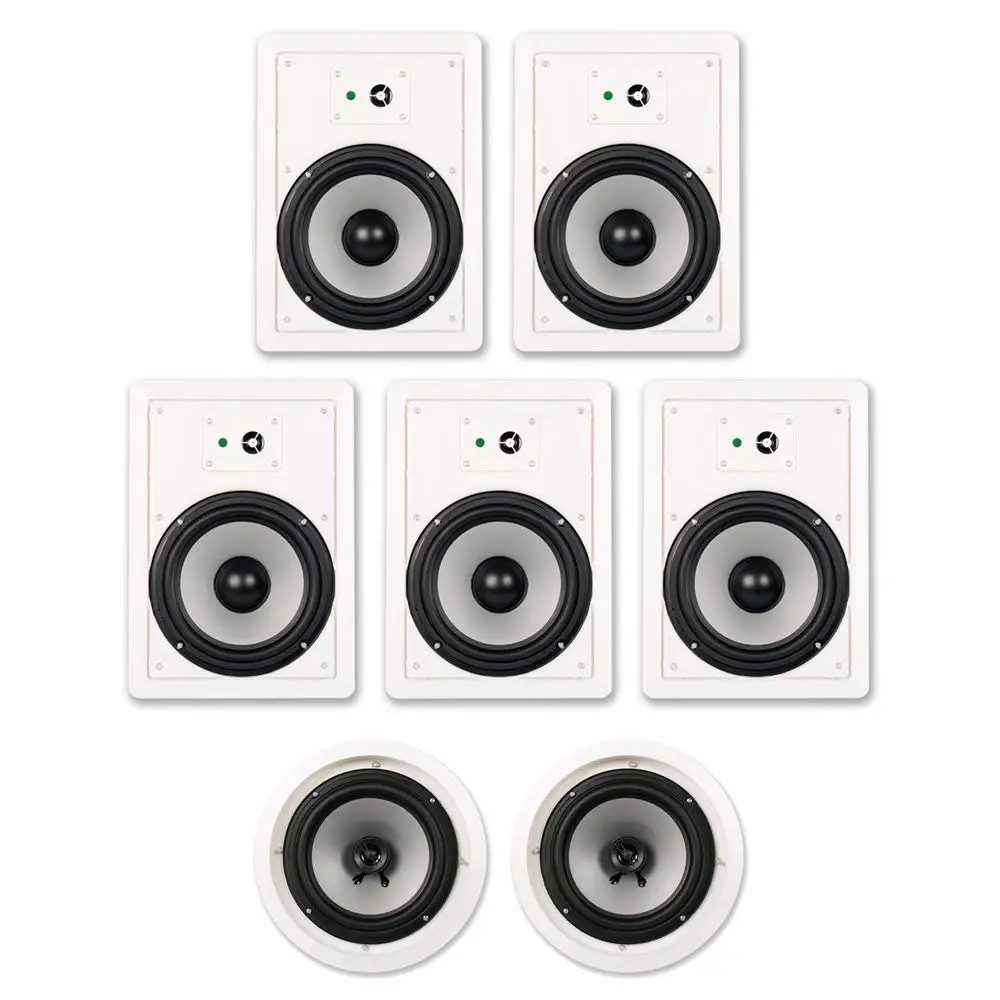Table of Content
Sit on your couch, play music with deep bass, and ask a friend to move the subwoofer around the room to get the ideal spot. The floor-standing speakers don’t have the hassle of shelves or stands. The distance between the speakers should be 8 feet more or less. The distance between speakers with the back wall sidewall should be 2-3 feet. You can try to place the speakers 4 feet away from each other and 2-3 feet away from the walls.
Ceiling mounted surround sound speakers can be stand-alone for music listening applications or paired with a surround sound system to complete it with overhead sound. Systems with more than 11 sound channels are the most advanced sound systems available today. In them, ceiling speakers are added to the channels of the previous systems, which are responsible for sound effects coming to the viewer from above.
1 Surround Speaker Placement
One of the biggest benefits of floor-standing speakers is they can be manually adjusted to better suit your listening needs. Great for audio systems that need high-profile installation. You should also avoid obstacles in the path of the sound wave. You will never get good sound if the furniture, objects, or the TV itself blocks the sound path to your ears.

This is especially true for ceiling and in-wall speakers. For side speakers, we will usually suggest you move them slightly backwards, and for rears, move them further apart than closer together. If you have a larger room place surround speakers on stands but if you don’t have space you can mount them on the wall. Place the speakers beside you on your left and right side. The speakers should be angled so that they direct sound directly to you. In many speaker arrangements such as 5.1 or 7.1 surround sound ceiling speaker placement, keeping your subwoofer on the ground will create the best sound profile for the overall room.
Dolby Atmos® and DTS:X™ guidelines
You should crawl around the room with the device and listen to the low-frequency sound. The angle diapason of these audio devices is between 22 and 30 degrees. If you follow these parameters, the result will meet your expectations. Ideally, they need to stand at the same distance from the TV, as well as from your seating place. Today’s home theater receivers come with so many features, they can make your head spin.
Your surrounds should both be the same distance back from the front of the room as opposed to having one be closer to the television than another. HIGH QUALITY - Pair of 5.25'' reinforced polypropylene cones with suspension cloth & 1/2'' High Compliance Polymer Tweeter. Enjoy a more consistent & enhanced sound field with full range stereo surround sound reproduction. We've compiled a list of some of the best floor standing speakers that are under 1000 dollars. If these are too expensive then keep looking, because we're sure that whatever type of speaker you need is out there.
So you’ve got a new set of surround speakers?
The center speaker should be then installed below the monitor; if you put it above your TV, the audio will shoot over your head and go largely unheard. 7.1 is great if you have some room behind your listening position. Many living spaces can accommodate this, but it takes a room that’s long enough for the extra speakers to be worth it.
If dedicated music listening is also essential, 30° is better. Hello — I have a question about spacing of the rear surrounds vs the side surrounds? My new receiver can handle 7.1 and I have a 20 x 21 living room with an open floor plan to the kitchen behind. I removed plywood from attic above and I have a choice of putting the rear surround speakers 2 1/2 ft or 4 ft behind the surrounds and inward half the distance apart.
1.2 - Five channels plus 2 Dolby Atmos Speakers - Most Popular
This is basically 10 degrees off a straight line drawn up from your ears which puts them slightly in front of your listening spot. Designing your home theater speaker layout to maximize performance may require some help. This video is part of our Home Theater Design Series that covers virtually everything you need to know.
Secure them to prevent falling to the side of a ceiling joist, and add the finishing touches such as the grill cover. This can be made easier if you have assistance from a friend, or if you have use of an upstairs or ceiling crawl space. Once the holes are made, start snaking your wires through the hole and running them back to your amp.
Try to leave at least a few inches of space between the top of the center channel and the bottom of your TV. This prevents the TV from blocking some of the center channel's sound . If the speakers are too far apart, you'll have music playing too loudly in some parts of the room and too quietly in other spots. Before we dive into the subject, please note that almost everyone reading this article will have some challenges in their room. Some problems could be columns, windows, or doors in the way preventing proper speaker placement.

Firstly, low-frequency waves from two places can dampen each other. Therefore, the decision to install a second device should be made based on the capabilities of the equipment and the characteristics of the room. For the perfect placement of two subwoofers, two people are necessary. One will perform the role of the listener, and the other will move them around the room.

No comments:
Post a Comment